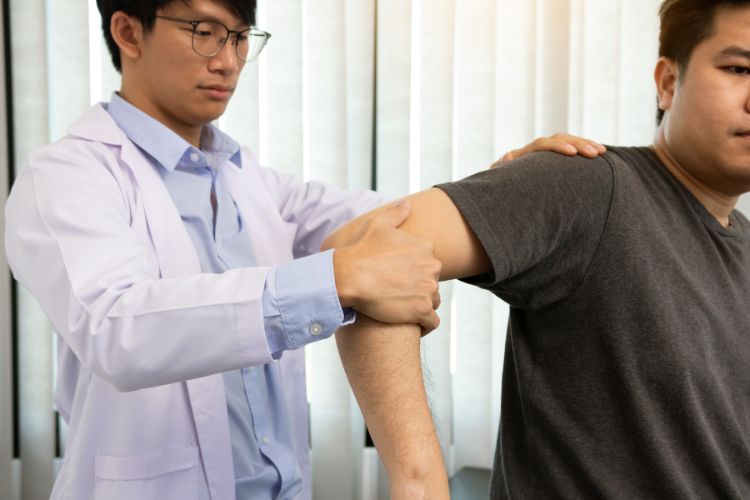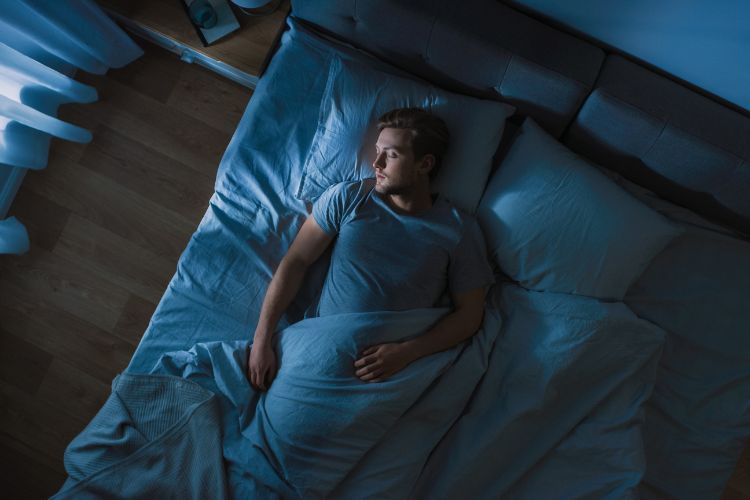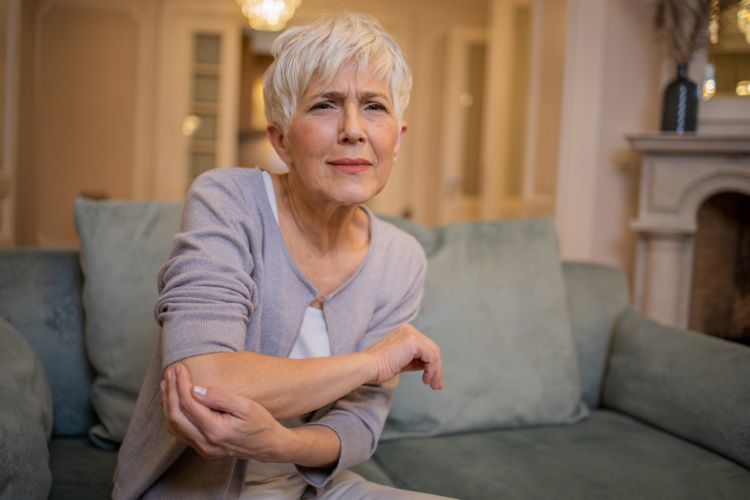If you know what tennis elbow is all too well, then you know that when your elbow hurts after sleeping, you may be in for a bad day. This kind of pain is not the pain that you would feel when you slept wrong one night and woke up with some stiffness.
When your elbow hurts after sleeping on a regular basis, you have a medical condition that may need attention. You can’t use your arms if your elbows aren’t working properly, and pain will interfere with that functionality and your range of motion. Learn what to do when you are dealing with this kind of regular pain.
Common Causes of Elbow Pain After Sleeping
There are many common causes of elbow pain after sleeping. You may just be sleeping on it wrong, or be suffering from residual pain caused by an old injury. At the same time, you may be suffering from a medical condition that is causing this pain. If you aren’t sure why you have elbow pain after sleeping, talk to a doctor or seek medical attention to have the elbow pain diagnosed.
Among the most common medical conditions that cause elbow pain after sleeping are pinched nerves, tendinitis, and arthritis. You might also have an injury that you weren’t aware would become a serious or chronic problem.
When your elbow hurts at night, before you fall asleep, you may want to look at your sleeping posture. If you have tried to fall asleep without anything at all causing elbow pain, then you can rule out sleeping posture as the cause of your elbow pain.
If you know you aren’t putting pressure on your elbow joint while you are sleeping, there is another cause for the pain that you are feeling when you wake up.
A pinched nerve is a common cause of elbow pain and will require medical intervention. This could be an extremely debilitating pain if left unattended. This pain is referred to as ulnar nerve entrapment and is pain caused by a pinched ulnar nerve. This nerve travels from your arm and through your neck and is long enough to become pinched very easily.
Other medical conditions that could cause elbow pain after sleeping include tendinitis and arthritis. Tendinitis is a condition where the tendon along the elbow is inflamed or strained. The most common reason for this is repetitive motion. That is how this kind of pain has become known as tennis elbow.
If you sleep with a bent elbow at night, as most people do, you will wake up with extreme pain. Arthritis works the same way. Here, however, the cartilage of the elbow is broken down at the joint level.
As the disease progresses, the cartilage becomes weaker, and the inflammation increases. It is very difficult to sleep and to wake up when you have an inflamed elbow joint.
There are many things that you can do to alleviate elbow pain after sleeping. You don’t always need a medical remedy. If the pain interferes with your life, however, you will want to seek medical attention in addition to adjusting some lifestyle needs at home.

Remedies for Elbow Pain After Sleeping
Night pain from tennis elbow or morning pain from tennis elbow can be excruciating. You can treat tennis elbow at home with a number of home remedies that will make sleeping more comfortable. Physical therapy can help to reduce the amount of pressure on your elbow nerve.
Spend some time at home every night stretching out the elbow and ensuring its range of motion is unaffected. Or, work it for as much as you can with light activity to keep it moving effectively.
Other home remedies include:
- Rest
- Ice or heat therapy
- Exercises for elbow pain relief
- Supportive pillows and cushions
- Expert opinions or testimonials if available
Resting Techniques
Rest is the most common tool to use for any kind of joint pain. When you rest a muscle group, you give it time to heal. There is the old adage, with rest comes healing. When we sleep, our bodies reproduce healthy cells faster than when we are awake and using our cells for daily function. The same concept applies when we are resting our sore muscles while awake.
Ice and Heat Therapy
Ice and heat therapy are the second most common home remedy for joint or muscle pain. Heat therapy is effective because it gets the blood flowing, and gets essential vitamins and nutrients to the injured area. Be sure that any heat you are applying is being applied with a thin cloth wrapped around the heat so that you do not injure yourself further.
Ice therapy works similarly. Ice helps to cool the muscles and connective tissue down, and this will reduce any inflamed areas around the elbow. You will also get more blood flowing to the injured areas with ice packs. You want to be sure that you are using wraps around ice packs when you are treating your elbow with that as well.
Exercises for Elbow Pain Relief
You may not feel like doing any exercises when you are dealing with tennis elbow. Even mild stretching can help you to feel better when you have tennis elbow. You want to be sure that you are not just stretching the elbow, but all the muscles of your forearm.
Hold every stretch for approximately 30 seconds if you can. Turn the arm over and try to push your fingers in the direction of the floor. Hold that stretch for another 30 seconds.
Supportive Pillows and Cushions
Sometimes stretching and moving the muscle group is the worst thing that you can do. Use pillows and cushions to rest the elbow when you are trying to sleep or when you are watching television. It is very difficult to sleep with a straight arm, so you have to force your arm to stay immobilized when you are sleeping so that it can heal on its own, or your tennis elbow is worse at night.

Sleeping Positions for Elbow Pain Relief
When your elbow hurts after sleeping, you need to look to your sleeping position as a cause of your post-sleep pain. This is more important if your elbow only hurts after sleeping. This condition is common enough that studies have been performed to determine what are the best and worst sleeping positions for elbow pain relief.
The worst sleeping position for elbow pain relief is sleeping with your arm bent at any angle. Even if you sleep with your arm under the pillow where you feel it is cushioned, or with your arm overhead, you run the risk of damaging your arm more.
You also want to avoid sleeping on your arm as many people do. This may sound obvious, but it is very difficult to change a sleep style you have used your entire life.
In one study, participants who wore a brace or restraint on their arms to keep the arms close to their sides felt better in the morning. You may want to consider a brace that can help you to keep the elbow immobilized during the night.
When you sleep on top of the arm, the blood flow to the rest of the arm is affected. This means that your tendons will experience less blood flow than other parts of your body, and will be sore the next morning. If you are healing, your healing will take longer. Sleeping on your back, while not ideal, will help.
If you don’t already have extra pillow support for your elbow, there are many different kinds of medical pillows that you can get at your local pharmacy that can help. Supporting your body properly when you are sleeping to ensure that you do not bend your elbow is critical to ensure healing.
You want to sleep on the side of your body that is not affected by the pain to decrease the amount of strain that you could put on your body from sleeping. This will also prevent your arm from twisting while you are sleeping. You may think it will be uncomfortable, but you may find that you prefer it when you start to sleep this way.
Prevention and Lifestyle Changes
When it comes to tennis elbow or elbow pain after sleeping, prevention goes a long way toward the cure. So do lifestyle changes. Sleeping with pillow support or adjusting your sleep pattern entirely will help considerably. However, there are other things that you can do to overcome tennis elbow pain.
Begin to put the objects that you need to get through your day within reach. This way you are not putting additional stress on the elbow that is in pain on a regular basis. Keep the TV remote in your lap for example instead of on the coffee table, or prop it on a pillow when watching TV. It may seem like a chore, but if you find yourself reaching and wincing for the remote, you may want to consider trying another approach to reaching daily items.
Rest your arm as much as you can. Keep ice packs handy at work and at home so that they too are within reach. You can never ice an injured body part too much. Leave an ice pack on for 15 minutes and then apply it again in an hour or two. The more often you do this, the more you keep the blood flow moving.
You may want to change your mattress and pillows at home in order to find a way to sleep better. You will need to sleep on your back while this injury heals. Find the way that works for you so that you can still get a good night’s sleep. In addition to healing, that is the overall goal for you.
When the pain becomes persistent, see a doctor or medical professional to have it diagnosed. You may need more robust treatment for the tennis elbow. Your specialist will still prescribe at-home remedies, but this is still a treatment plan that will work. You can incorporate your treatment with your existing lifestyle and prevention changes and should continue to sleep on your back.
Treat Elbow Pain At Night Today
When you have persistent elbow pain, you can start by treating it at home on your own. There are many sleep posture patterns you can try to avoid putting additional pressure on your injury. You may also want to get some newer pillows or supportive cushions for the bed to help you sleep on your back.
Elbow pain can get worse at night because we don’t realize we are injuring the elbow when we are asleep. If the elbow pain begins to interfere with your quality of life, you need to see a doctor for help. Get your elbow pain treated today before it becomes worse, or worse, a permanent problem.
